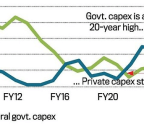
There are many qualities that Prime Minister Narendra Modi embodies, supreme confidence being one of them. Another is the astonishing ability to seize the moment and make it his own. As he stood atop the ramparts of the Red Fort to deliver the Independence Day address for the 10th consecutive time this August 15, he presented to the nation an impressive report card of what he and his government have achieved since 2014, encapsulated in a catchy slogan — “Reform, Perform and Transform” — that he is also likely to use in his campaign for the 2024 Lok Sabha election. He then went on to persuasively outline why the next five years were critical in India’s march towards a Vikasit Bharat or developed country by 2047, when it celebrates 100 years of Independence. It was in the punchline, however, that the PM’s real message lay. “Next time, on August 15, from this very Red Fort, I will present to you the nation’s achievements and progress,” he said. An audacious assertion from a prime minister at the end of his second consecutive term, a time when anti-incumbency looms as nemesis for even the best of leaders.
Few leaders in India have been handed a third consecutive term. In the final year of his second term, it was clear that Dr Manmohan Singh, Modi’s predecessor, was a spent force and his party, the Congress, was headed for defeat. Atal Bihari Vajpayee, the first prime minister of the Bharatiya Janata Party (BJP), did win three terms, but his first stint was only a 13-day affair; his second, coming after a gap of three years, lasted just over a year, and it was only his third stint between 1999 and 2004 that saw him complete a full term as prime minister. Indira Gandhi did enjoy three consecutive stints in power from 1966 to 1977 but never had the distinction of leading her party to three consecutive majorities in parliamentary polls. That honour so far has belonged only to Jawaharlal Nehru, India’s first prime minister, who ruled from 1947 to 1964 and won for the Congress three consecutive majorities—in 1952, 1957 and 1962.
If all goes well forthird consecutive win with a full majority. The BJP on its own is expected to win 287 seats—which, though lower than the emphatic 303-seat tally it won on its own in 2019—is still 15 more than the 272 needed for a simple majority in the 543-member Lok Sabha. The National Democratic Alliance (NDA), which the BJP heads, is projected to get 306 seats overall, 47 less than its tally of 353 seats in 2019. This diminution is a reflection of how the BJP’s allies, despite recent attempts to bolster their numbers, have dwindled in strength, which should be a cause of concern for the party and the prime minister.






